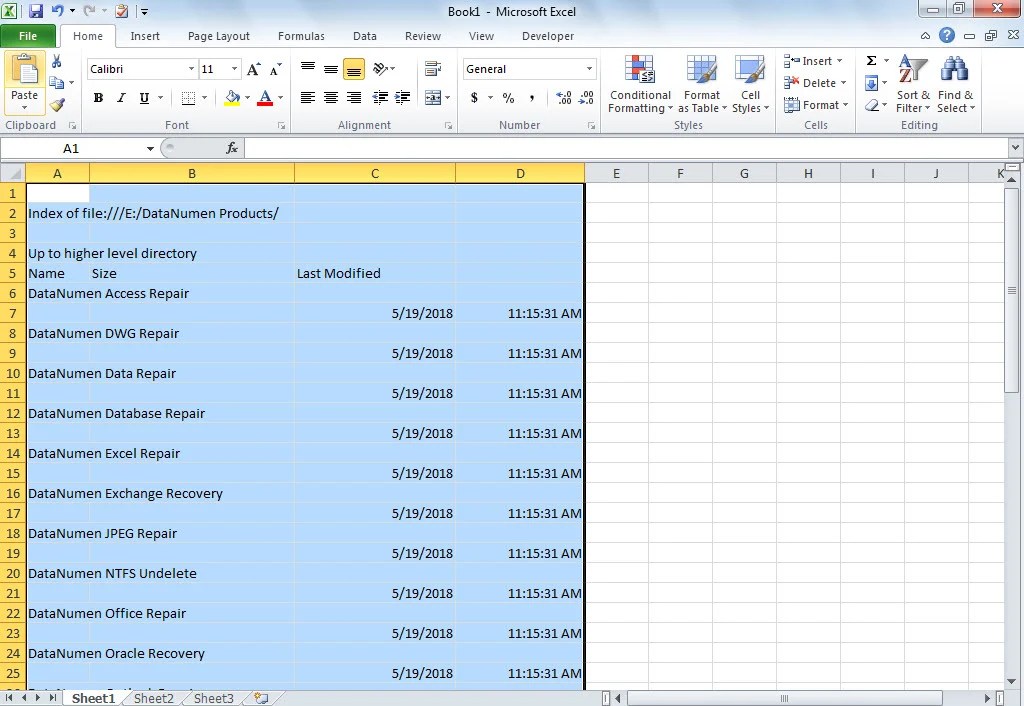How to Easily Retrieve Excel Sheet Names

When you're working with numerous Excel spreadsheets, navigating them can quickly become a daunting task, especially when you need to manage or reference different sheets within the workbook. Excel sheets hold vital data in different tabs, and knowing how to retrieve sheet names efficiently can streamline your workflow significantly. Whether you're an accountant, data analyst, or just someone who frequently uses Excel for organizing personal data, understanding how to list and retrieve these sheet names can be invaluable. Here, we'll explore several methods to easily retrieve Excel sheet names, tailored to enhance your productivity and Excel skills.
Method 1: Using VBA for Retrieval

Visual Basic for Applications (VBA) is a powerful tool within Excel for automation and task execution. Here's how you can retrieve sheet names using VBA:
- Step 1: Open your Excel workbook.
- Step 2: Press
Alt + F11to open the VBA editor. - Step 3: In the editor, click
Insert > Moduleto create a new module. - Step 4: Copy and paste the following VBA code into your module:
Sub ListSheets() Dim ws As Worksheet Dim wsNew As Worksheet Set wsNew = Sheets.Add With wsNew .Cells(1, 1).Value = "Sheet Names" For Each ws In ThisWorkbook.Worksheets If Not ws.Name = .Name Then .Cells(.Rows.Count, 1).End(xlUp).Offset(1, 0).Value = ws.Name End If Next ws .Columns("A").AutoFit End With End Sub - Step 5: Run the macro by pressing
F5. A new sheet named 'Sheet Names' will be added, listing all your sheet names.
💡 Note: You can modify the VBA script to include other information like sheet index or if it's visible/hidden.
Method 2: Using Excel Formula

If you're wary of using VBA, Excel formulas offer another way to retrieve sheet names:
- Step 1: In a cell, enter the following formula:
=MID(CELL("filename",A1),FIND("]",CELL("filename",A1))+1,LEN(CELL("filename",A1))) - Step 2: Copy this formula down the column to retrieve all sheet names. Ensure each cell in column A has this formula. The sheet name will be displayed.
💡 Note: This formula might need adjustment based on your Excel version. It retrieves the current sheet's name. If you need to list multiple sheet names, consider using the method below.
Method 3: Using Power Query

Power Query, available in Excel 2013 and later versions, is excellent for pulling and transforming data:
- Step 1: Go to
Data > Get Data > From Other Sources > Blank Query. - Step 2: In the Power Query Editor, click
Home > Advanced Editor. - Step 3: Enter this formula:
let Source = Excel.Workbook(File.Contents("Full Path to your Excel file.xlsx")) in Source - Step 4: Click
Doneand then clickLoad Toto load this table into your workbook. The result will be a table showing all sheets.
| Method | Complexity | Best For |
|---|---|---|
| VBA | Medium | Automation, list all sheet names |
| Formula | Low | Quick individual sheet name retrieval |
| Power Query | Medium-High | Data Transformation, listing sheets in large workbooks |

Each method has its own set of advantages and is suited for different scenarios:
- VBA is highly customizable and can automate repetitive tasks.
- Formulas are quick and don’t require you to learn coding.
- Power Query provides an advanced approach for data professionals dealing with complex data sets.
Why would I need to retrieve Excel sheet names?

+
Retrieving sheet names can help with creating indexes, linking sheets for data consolidation, or automating tasks like exporting sheet-specific data.
Can I retrieve sheet names in Excel for Mac?

+
Yes, the VBA and formula methods work similarly in Excel for Mac, though Power Query might have some limitations or require adjustments.
Is there a way to make the VBA method list sheets from another workbook?

+
Yes, you would need to modify the VBA script to open the target workbook, list the sheets, and then close the workbook. This requires using FileDialog to select the workbook and adjusting the code accordingly.
By understanding these methods, you can now navigate and manage Excel sheets with greater ease and efficiency. The ability to list and retrieve sheet names not only saves time but also reduces the risk of errors when working with extensive data sets or automating processes. Whether you choose the automation of VBA, the simplicity of formulas, or the power of Power Query, you’re equipped with tools that will make your Excel experience much smoother. Keep exploring and experimenting with Excel features to continue enhancing your proficiency in this versatile tool.



